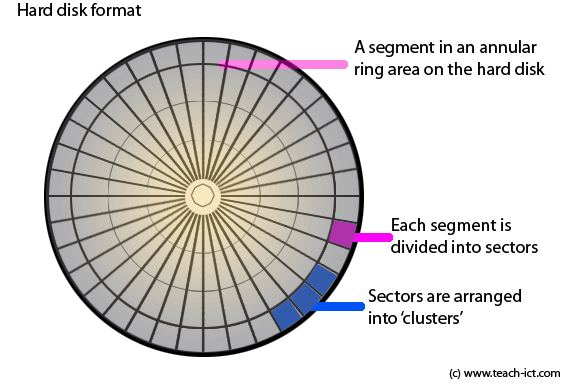 A LEVEL COMPUTING
A LEVEL COMPUTING Modern P.C.
Modern P.C.
 Theory
Theory
5. File Allocation Table (1)
The operating system has the task of creating and managing the file system on its hard disk drives.
There are a number of filing methods an operating system can use to organise files and folders. One of them is called the FAT filing system. Otherwise known as the 'File Allocation Table' system.
Another very popular system is called the NTFS format which is used by XP and Vista. This has some advantages over the older FAT system, such as better efficiency and file security. But both use the same basic principles.
All data on a hard disk is stored in 'Sectors'. Sectors are grouped together into 'clusters'

The cluster is the minimum unit of storage a file can use. If the file is actually smaller than a cluster, then the unused space is wasted. A typical cluster size is 4kb but can vary from 2kb to 32kb. Each cluster is numbered so the FAT can locate a particular cluster on the hard disk.
Challenge see if you can find out one extra fact on this topic that we haven't already told you
Click on this link: Unix Operating System
Copyright © www.teach-ict.com

